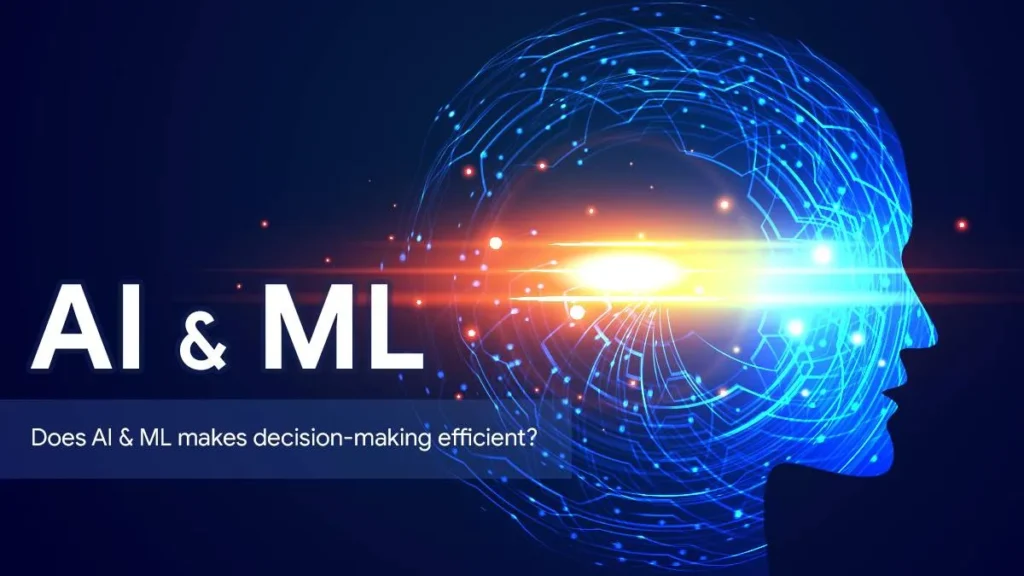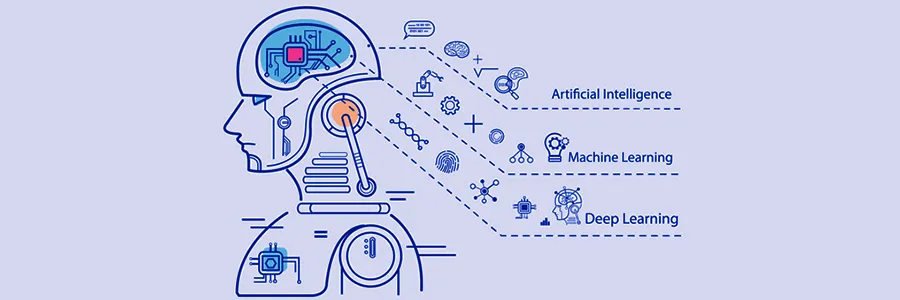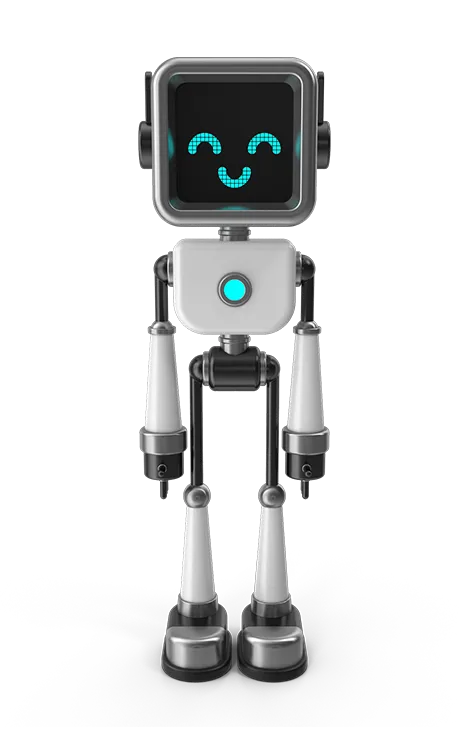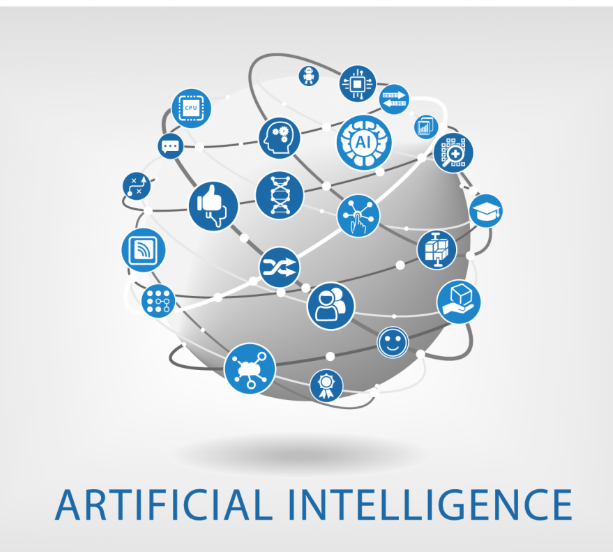Still amazed how the technical leaders and AI Tools are providing a flawless experience of the innovations? As we are moving into the future, Artificial Intelligence and Machine Learning are becoming the main pillars of innovation. This changes the way we interact with new technologies and also the growing hierarchy of AI, raising the demand for professionals across industries.

Therefore, to meet this demand, educational programs around the world have evolved to offer more advanced and flexible learning routes. Hence, this blog is specially intended for AI and Machine Learning enthusiasts who desire to learn the programs.
Why Is Artificial Intelligence And Machine Learning Important?
As time passes, Artificial Intelligence and Machine Learning are reshaping huge amounts of data produced by sectors dealing with education, healthcare, and even security ethics. So here are some reasons that have made AI and ML so popular:
- Even after the expansion of AI tools, there is a significant gap between the demand for skilled AI professionals and the number of qualified individuals. Hence, education of these programs is the only sustainable way to be the bridge between them.
- Businesses compete to innovate products that are more efficient. Therefore, the government organizations that are investing in AI learning are in a stronger service to guide those innovations.
- Educational institutions are under pressure to teach students the ideas and practices of bias mitigation, data privacy, and ethical AI developments.
- Access to Artificial Intelligence and Machine Learning education for all the talent from different regions and backgrounds can contribute to reducing technological inequality.
- Attaining these competencies equips practitioners with the distinct possibility of rapidly automating routine activities with significantly greater flexibility to create future pathways of the profession.
Programs Of Artificial Intelligence and Machine Learning To Pursue
In 2025, both AI and ML Programs are designed with depth and flexibility at all levels. A wide variety of projects suited for different learning objectives and professional backgrounds is constantly adapting to meet the changing demands that include technical as well as strategic expertise. Let’s dig into some of the Artificial Intelligence and Machine Learning programs you should learn in 2025.

1. Supervised and Unsupervised Learning Programs:
This education serves as the backbone, helping professionals to develop and discover the predicted outcome and hidden pattern. Therefore, gaining experience with real-world data is necessary for both beginners and professionals.
- Supervised learning programs concentrate on using identified data to make the prediction easier. This teaches algorithms and tailored methods like gradient boosting.
- Whereas unsupervised learning focuses on discovering patterns in unidentified data. Exploring methods like hierarchical clustering, as well as dimensionality reduction techniques such as PCA and t-SNE.
2. Deep Learning AI Programs:
The main goal of this course is to train beginners to design and optimize difficult networks that face complicated tasks. On the contrary, graduates are trained and prepared in deep learning skills to innovate in various sectors of autonomous systems.
- These programs cover a wide range of modern skills that include CNNs, which are used for image classification, object detection, and facial recognition. Recurrent Neural Networks (RNNs) with long and short-term memory units for tasks such as speech, text, and time series data.
- Students learn about language processing and ChatGPT models, focusing on expanding data techniques to enhance the performance and efficiency of the basic data set and techniques of the AI tools.
3. No-Code/AutoML (Automated Machine Learning) Programs:
These programs reduce the technical barriers, helping professionals to access the power of machine learning. At the same time, Auto ML refines the model creation by automating the repetitive and technical tasks. This enables technical and non-technical qualified employees to utilize ML without prior knowledge, hence supporting both beginners as well as professionals in creating AI-driven solutions.
- No-Code ML focuses on little or no coding to build ML models through graphics. It assists business analysts, educators, as well as small teams across various sectors with AI and machine learning. This provides a drag-and-drop feature, removing unnecessary interruptions and resolving complicated problems.
- Whereas Auto ML clarifies the ML path by automating tasks like model selection and hyperparameter tuning. The combination of rapid and consistent model outputs reduces manual effort and is less troublesome for those who are not ML experts.
4. MLOps (Machine Learning Operations) and Model Development Programs:
MLOps and Model Development programs are the processes of positioning the models and running them sustainably. They teach how to manage the machine learning procedure and qualify the professionals to maintain durable ML systems.
- MLOps Programs prioritize the functional side of machine learning practices, from data engineering to AI. The key elements of this program include replica sheets, CI (Continuous Integration) or CD (Continuous Deployment) route for easy workflows, as well as monitoring its performance over time.
- Model Development Programs emphasize the transition from development to production, ensuring they function in real-time systems. It deals with transition models, core learning on serving models using REST APIs, cloud platforms such as Microsoft Azure, management with visualization, and handling delays.
5. Multimodal AI And Explainable AI (XAI):

These are the most transformative programs of AI in 2025. As AI approaches consistency in vital industries such as the healthcare sector, finance, law, and security over time, the necessity of transparency is imbued with trust when working with multiple types of data. Hence, allowing machines to understand the world’s difficulties like humans, thereby creating more trust and global standards among shareholders.
- These programs concentrate on how to construct a system that connects the information from different sources. This results in more accurate and informative answers. They prioritize fusion methods for visual, text, and audio data, as well as modified tools like Flamingo and GPT-4o, even Chatbot AI that can see and respond to visual content, texts, and explain diagrams.
- It also trains experts how to build models that are intuitive and explainable. It focuses on domains of high consequence where we need to be very clear about why we’re making decisions. Subjects learned include approaches such as inaccurate explanation, visualizing and tracing decision paths, ethical AI, and regulation compliance.
6. Artificial Intelligence in Healthcare and Bioinformatics:
Artificial Intelligence is changing healthcare with new automated diagnostics, treatments, and advancing medical research exponentially. Therefore, it emphasizes several major areas that influence machine learning and data-driven methodologies to address intricate challenges in medicine and biology.
- This provides the beginner with AI strategies in clinical and biological sectors using structured and unstructured data. Medical description includes deep analysis, like detection of cancer cells, fractures, use of Electronic Health Records for healthcare ideas. This also explains the genetic data for personalized medicine, understanding clinical documents, and research.
- Programs in this area provide professionals with the vision to lead AI innovations that improve patient care, reduce treatment costs, and help overcome scientific research barriers.
7. Artificial Intelligence and Machine Learning In Autonomous Systems:
The automated machines are modifying various tasks like manufacturing, transportation, and even household chores. In today’s world, autonomous organizations train pros to understand their ambience, plan their actions, and adapt to changing environments without direct human control.
- Artificial Intelligence and Machine Learning combine with robotics, creating a flexible system that can operate in factories, cities, skies, and oceans. This learning includes Perception & Sensor Fusion, Inertial Measurement Units (IMUs), and physical sensors, as well as real-time mapping and GPS for good navigation.
- Robotics includes techniques, ranging from PID control to advanced policy methods that are capable of adapting to new environments. It seeks to bridge the gap between virtual training and practical use, aiming to make policies developed in simulators be safely used in human environments.
8. Global Challenges Faced By Artificial Intelligence and Machine Learning:
Even though Artificial Intelligence and Machine Learning are reshaping worldwide industries, they bring global challenges that require urgent attention. Problems like access to AI technologies and data privacy, are addressed by these programs and preparing professionals to build an intelligent system.
- Security and Data Privacy- Artificial Intelligence and Machine Learning tools depend on data, which increases concerns about the privacy, security, and management of data. The lack of a uniform data control structure across constituent governments results in unstable security.
- Algorithmic Bias and Equity- The aptitude in data training can worsen social, racial, and gender biases. Therefore, the global concern for algorithm structure remains liable and transparent for all stakeholders.
- Energy Utilization and Stability- Training large users requires an immense amount of energy and sustainability, creating an urgency to develop models that are more efficient and lessen carbon impact.
- Discrimination in Access- Inequality in access to advanced AI technology is also one of the significant challenges across underdeveloped countries, making it difficult for users to benefit from AI.
- Administrative and Honest Governance- Barriers to global use and help between AI developers exist because every country has different laws and ethical norms.
Henry Harvin Artificial Intelligence And Machine Learning Course

Henry Harvin undoubtedly offers the best well-designed AI and Machine Learning Course with expert trainers. The Ministry of Corporate Affairs, the American Association of EFL, and numerous other organizations are affiliated with this institution. Overall, the course is a good option for freshers and professionals, making it suitable for those needing advanced guidance or real project experiences.
- This Course provides a detailed theory of basic as well as direct skill development.
- A complete 32 hours of live training sessions, supported by 192 hours of self-learning, 11 hours of doubt clearing, and 6 hours of masterclass are provided.
- The course covers essential areas, including Supervised and Unsupervised Learning Programs, RL Program, EXI, Multimodal AI, and other important elements.
- After the course is completed, the institution provides a certificate along with an internship in top MNCs.
Conclusion
Artificial Intelligence and Machine Learning not only create changes in technologies but also affect how one interacts and communicates with the world. Central to walking people through successful lives in an AI-driven world is an education. By becoming experienced with the framework of different AI and ML programs, learners can make decisions that support their goals. Whether you’re an engineer or in any other field, investing in Artificial Intelligence and Machine Learning is never too late. In a world where learning never stops, choosing the right program means shaping the future and the future of technology itself.
Recommended Reads
- The Future of AI: In what ways will AI impact Programming Jobs?
- Top 8 Artificial Intelligence Courses in Mumbai
- Master AI and ML Courses: Your Gateway to AI Innovation
- 5 Best AI And Machine Learning Courses in Saudi Arabia
- THE BEST 7 MACHINE LEARNING BOOKS IN 2025
FAQs
Ans. Artificial Intelligence and Machine Learning are embedded in all areas of society – healthcare, finance, education, and even security. This changes the speed at which innovation and decision-making occur.
Ans. AI and machine learning will have to contend with data privacy, mistakes in making responsible AI, errors in AI abuses, and global situations.
Ans. The lives of people are affected by AI techniques in various ways, from customized services to improving the way of medical diagnosis, and smart automated electronic assistants.
Ans. Learners should know LMS (learner management systems) and how to handle datasets, including when data is missing or not recorded. Learners should know statistics, programming, and AI tools skills.
Ans. AI tools can be capable of understanding the many facets of the real world in the future. Hence, duplicating human intelligence and emotions is not possible.






Recent Comments